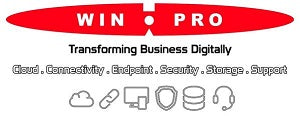The COVID-19 pandemic has led to a rapid shift towards remote work, but it's clear that this trend will continue beyond the pandemic. A hybrid workforce model that combines remote and in-person work is emerging as a popular solution that offers flexibility and cost savings, while also allowing employees to collaborate and maintain a sense of community. However, managing a hybrid workforce can be challenging, and IT has a critical role to play in supporting this new way of working. In this article, we'll explore how IT is adapting to remote and in-person work, and provide tips for managing a successful hybrid workforce.

Benefits and Challenges of a Hybrid Workforce
A hybrid workforce model offers several benefits, such as increased flexibility, cost savings, and improved productivity. For employees, it provides the freedom to work from anywhere, while companies can save on office space and related expenses. However, a hybrid workforce model also presents several challenges, such as communication and collaboration among team members, ensuring data security and compliance, and employee engagement. Companies need to adopt a strategic approach that leverages technology and communication tools to overcome these challenges and ensure a successful hybrid workforce.

Role of IT in a Hybrid Workforce
IT plays a critical role in supporting a hybrid workforce. It's responsible for setting up and managing remote work infrastructure, ensuring data security and compliance, and providing support for remote workers. To ensure that remote workers have the necessary resources to be productive and secure while working remotely, IT needs to adopt the right tools and processes. This includes providing access to cloud-based services, setting up virtual private networks (VPNs), and providing remote support.

Strategies for Successful Remote Work
Successful remote work requires clear expectations and communication protocols, as well as access to the right tools and resources. Companies need to establish a culture of trust and transparency to ensure that remote workers feel supported and engaged. This can be achieved by fostering a sense of community and belonging, providing opportunities for professional development, and ensuring that remote workers have access to the same benefits as their in-person counterparts. Companies also need to provide the right tools and resources, such as laptops, secure access to company data and systems, and collaboration tools.

Communication Tools for a Hybrid Workforce
Effective communication is essential for a successful hybrid workforce. There are several communication tools that can help, such as instant messaging and chat platforms, video conferencing tools, and project management software. These tools can facilitate quick and informal communication between team members, help teams stay organized, and collaborate on projects. It's important to choose the right tools that fit your team's needs and ensure that everyone is trained on how to use them effectively.
Conclusion
The shift towards a hybrid workforce model is not only a response to the COVID-19 pandemic but also a reflection of a changing work culture. As IT continues to adapt to remote and in-person work, companies need to adopt a strategic approach that leverages technology and communication tools. By doing so, companies can reap the benefits of a hybrid workforce model while overcoming the challenges that come with it.













